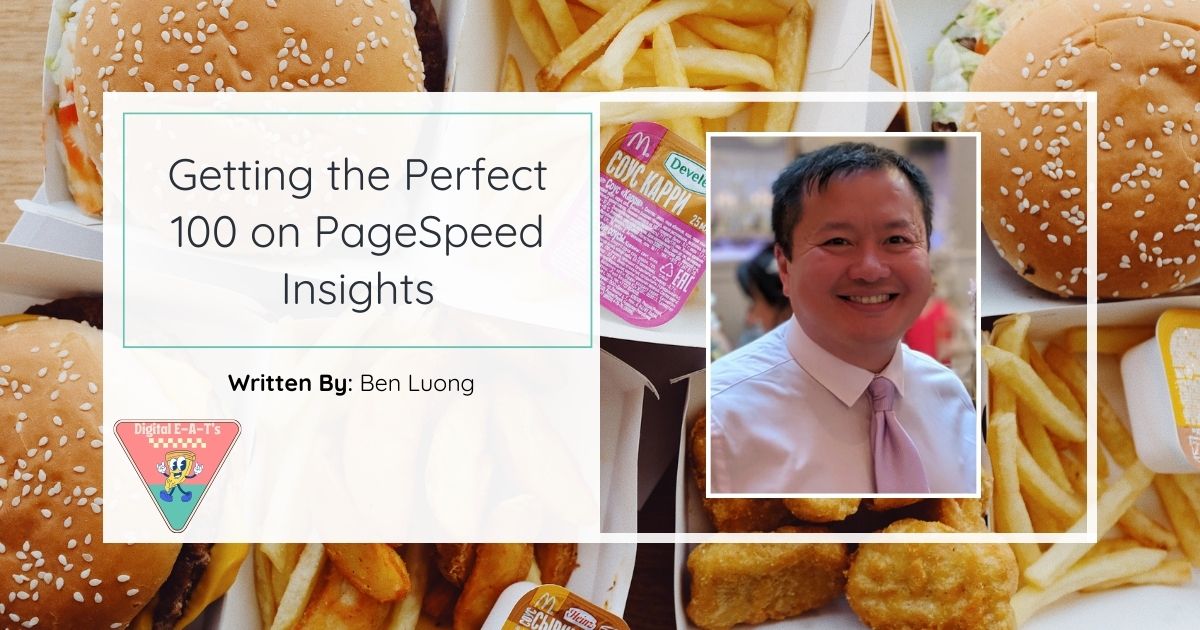Content Optimization For SGE: Ranking Factors and More
- Written By - Emily Gertenbach
- Content Process
- December 12, 2023
Google’s Search Generative Experience (SGE) is the next evolution of the SERP. Getting your content selected by Google as an SGE source is a little different from the way we’ve traditionally created high ranking content.
You have less control over whether your content gets selected as an SGE source, but you can increase the likelihood by creating specific, new, high-quality pages on domains with established traffic volume.
In some ways, SGE is a bit like the featured snippet on steroids. Let’s walk through how it works—and what you need to know about SGE content optimization.
How Does SGE Work?
To use SGE, you’ll need to log into a personal Google Workspace account via Chrome. As of the time of writing, SGE and other Search Labs features aren’t available for paid business Workspace users.
Once you’re logged in, navigate to labs.google.com and switch on “Generative AI in Search.”
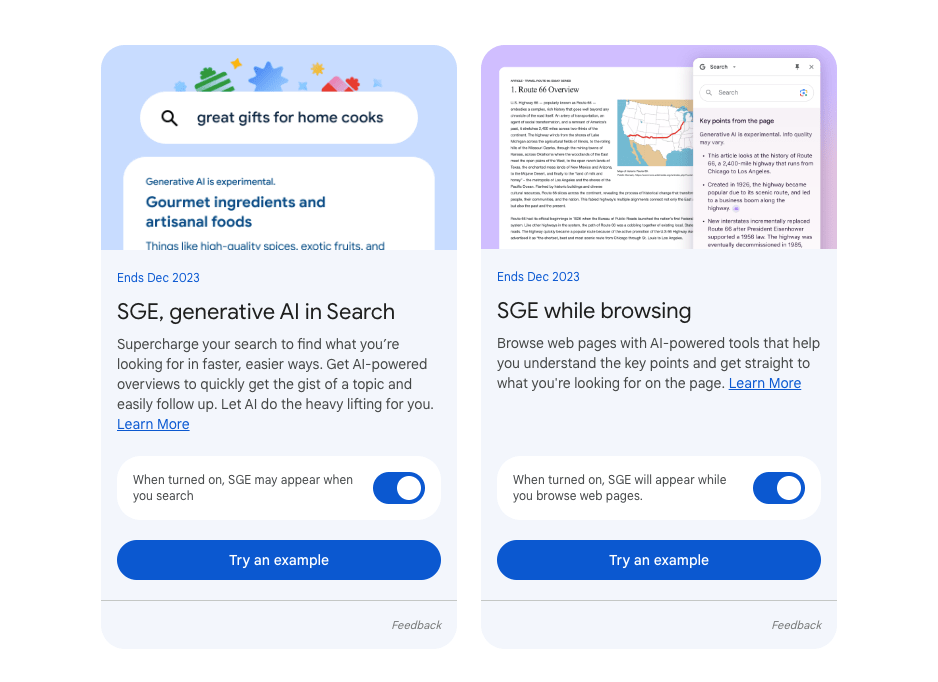
From here on out, many of your searches will automatically include an AI-generated response. That’s SGE in action.
These responses appear toward the top of the SERP, and typically just display the first few sentences with a button to expand the answer.
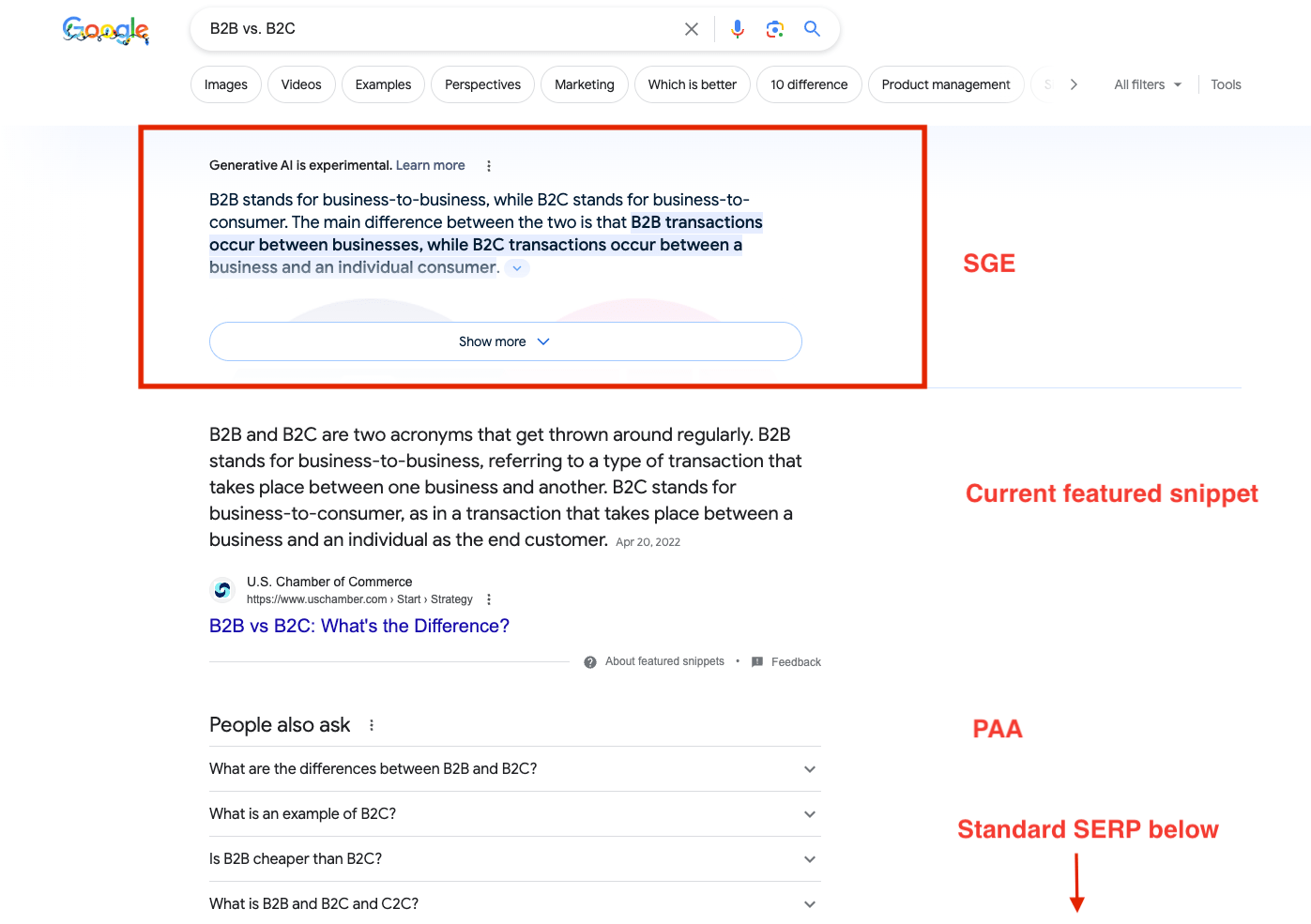
When expanded, SGE looks like its own SERP—complete with a featured snippet, highlights, images, or videos, and related links.
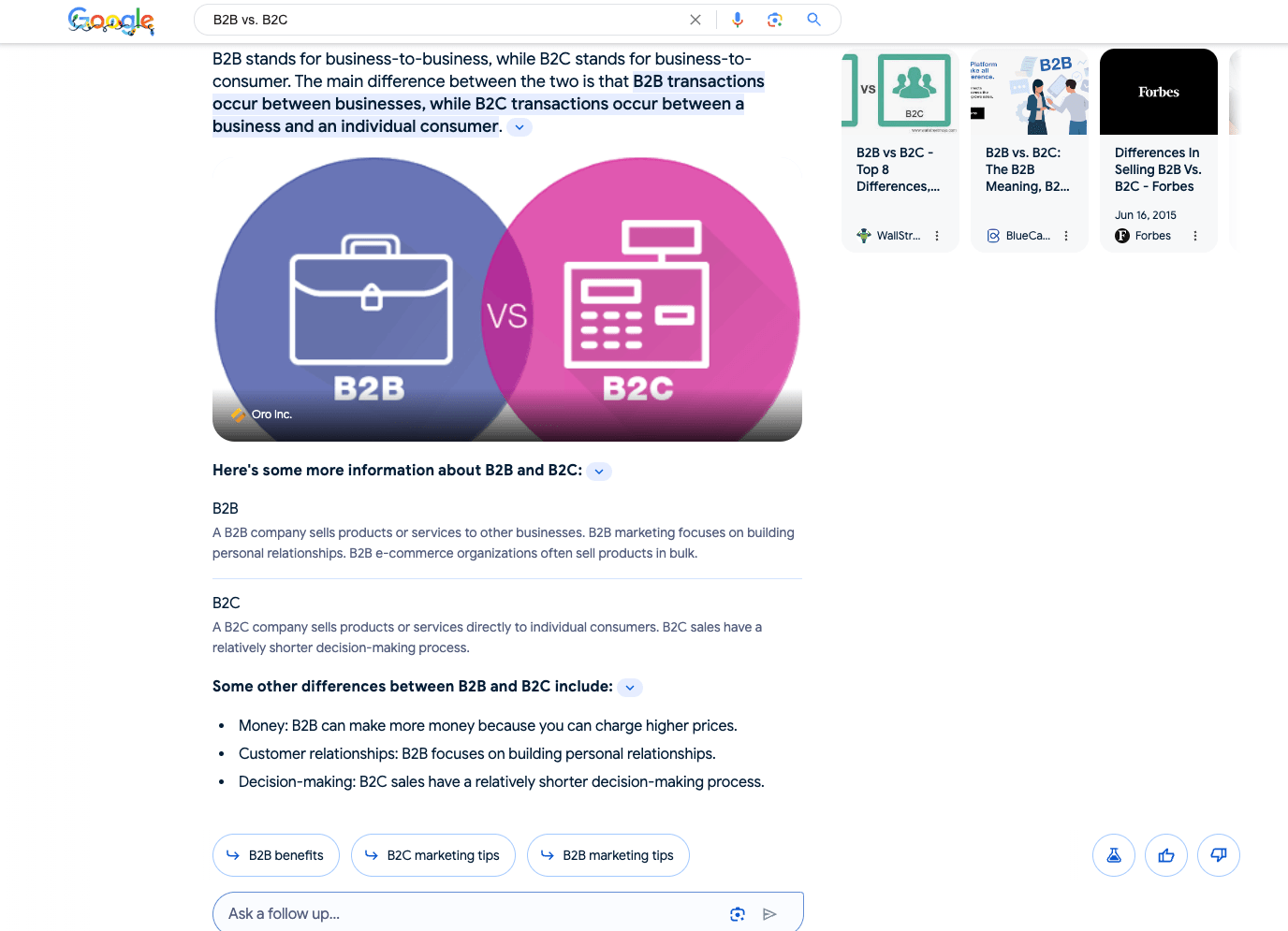
You can still access the regular SERP by scrolling down past the bottom of an SGE answer, but given the size of the result, I expect that this will eventually replace the SERP as we know it today.
How Does Google Create SGE Answers?
SGE answers aren’t entirely unique. They’re made of bits and pieces of content selected from other pages—but it’s not a direct summary of the top three organic SERP results.
To illustrate this, I’ll run a search for the term “how much does a CMS cost?“—I wrote the article that’s in the top spot in the traditional SERP. It’s been in that spot for a few years, so I can be reasonably sure it ticks Google’s boxes.
First, here’s what the SERP looks like without SGE turned on:
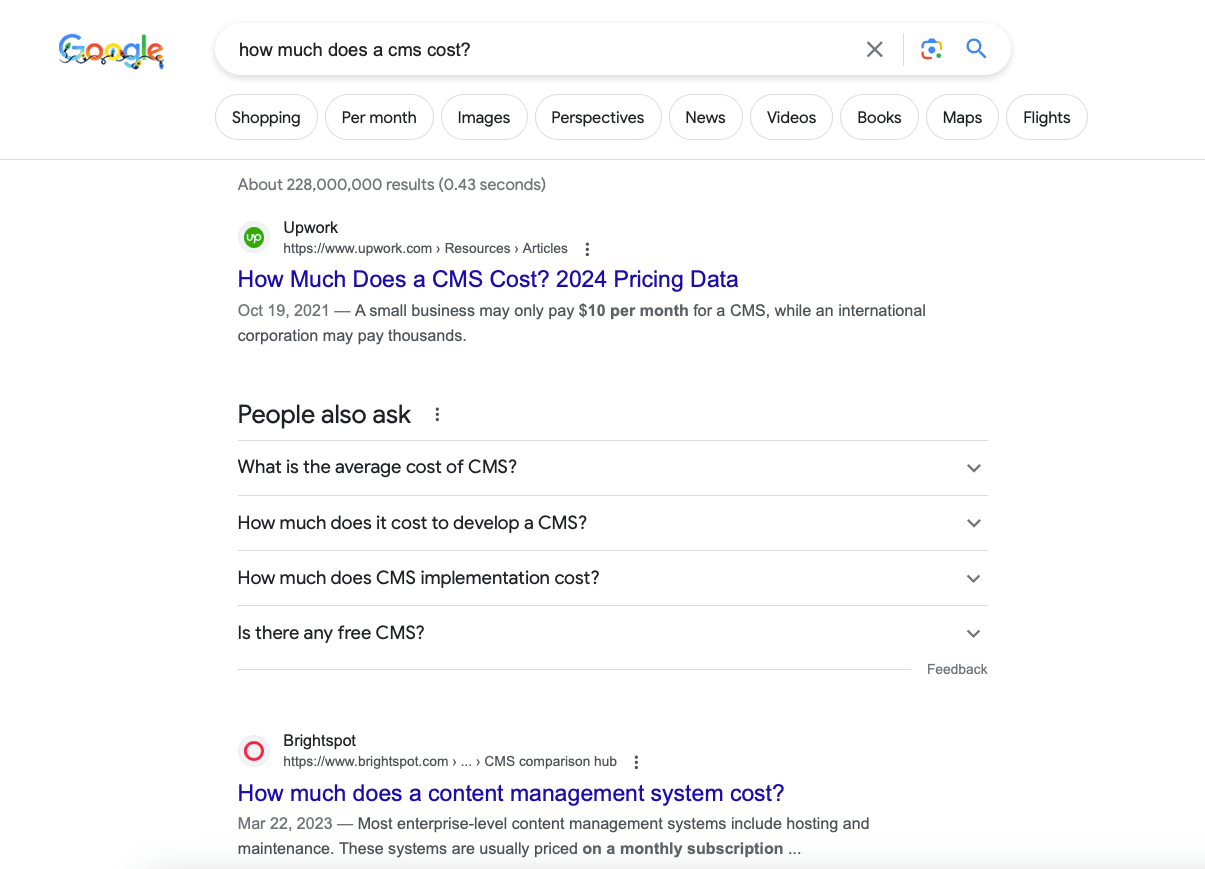
Here’s what we see when SGE is active:
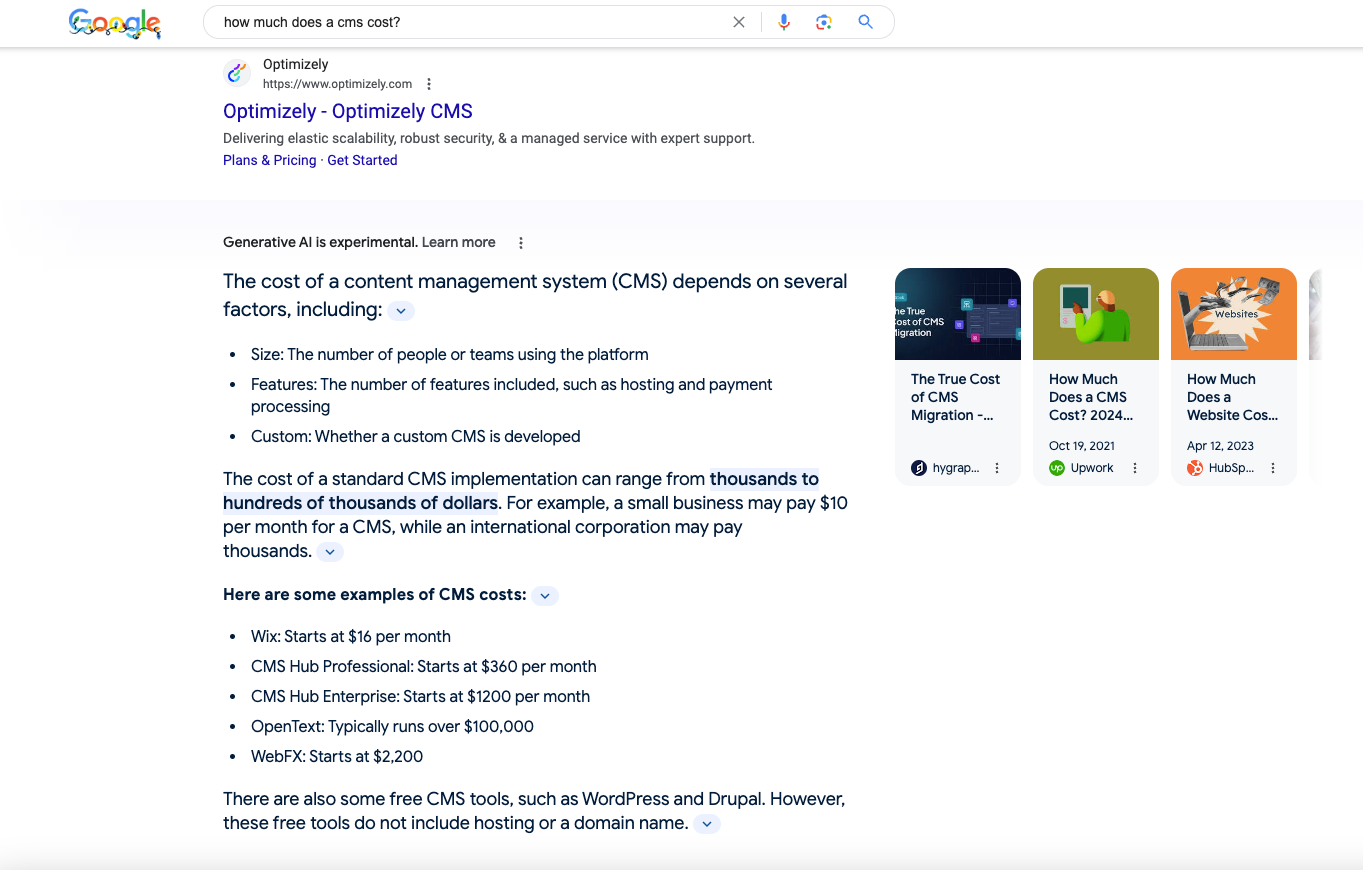
The little images to the right of the response are Google’s top sources for this SGE answer. For this query, Google’s chosen to highlight content produced by Hygraph, Upwork, and Highspot.
Compare those highlighted cards to the text underlined in the corresponding color:
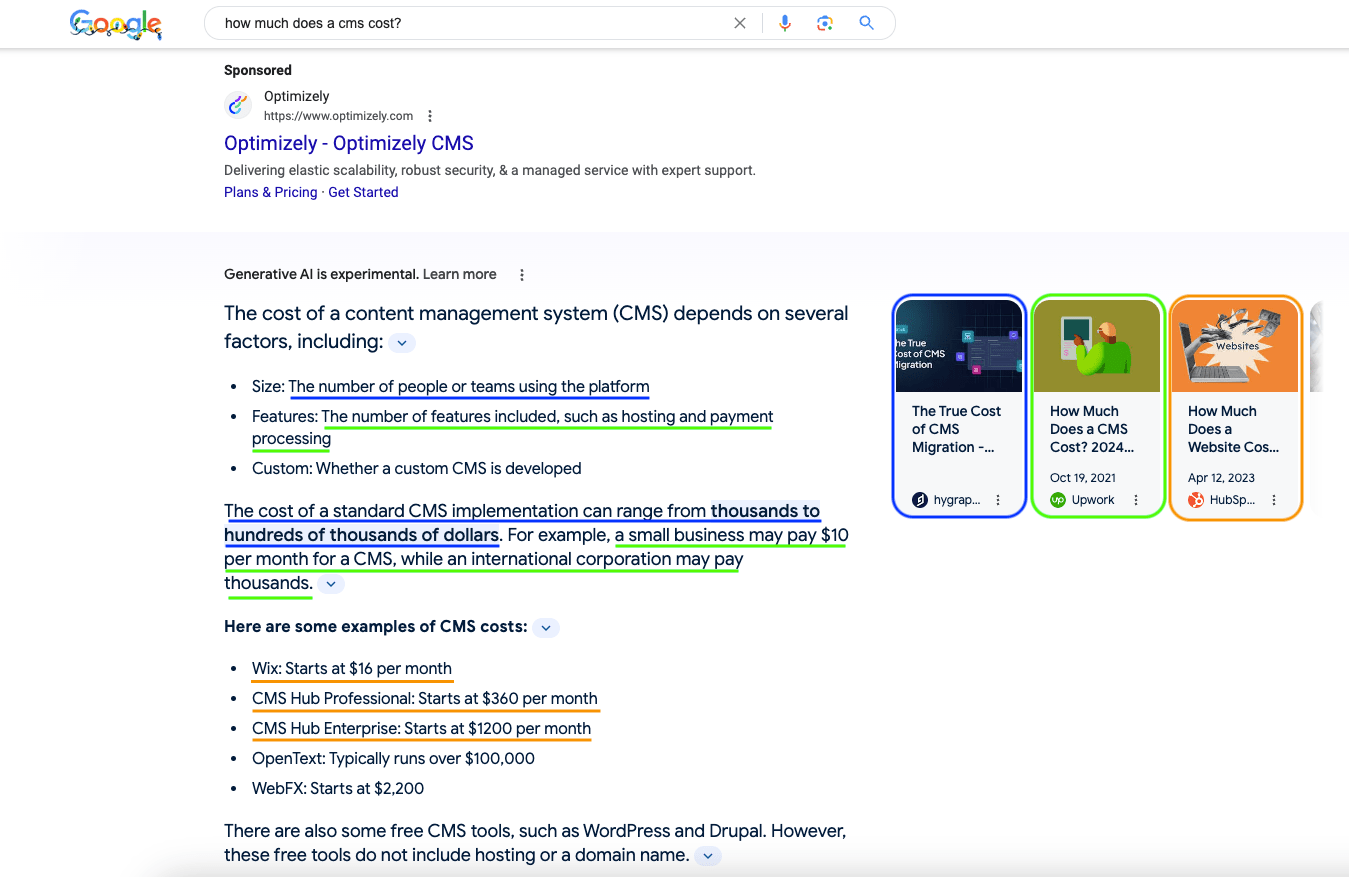
Those sections are pulled verbatim from the corresponding sources. Google is adding a few additional words for context and shuffling it around.
There are more sources used in this response, and you can view them by scrolling through the cards. You can also see the sources used in a specific section by clicking the drop-down arrow next to the response.
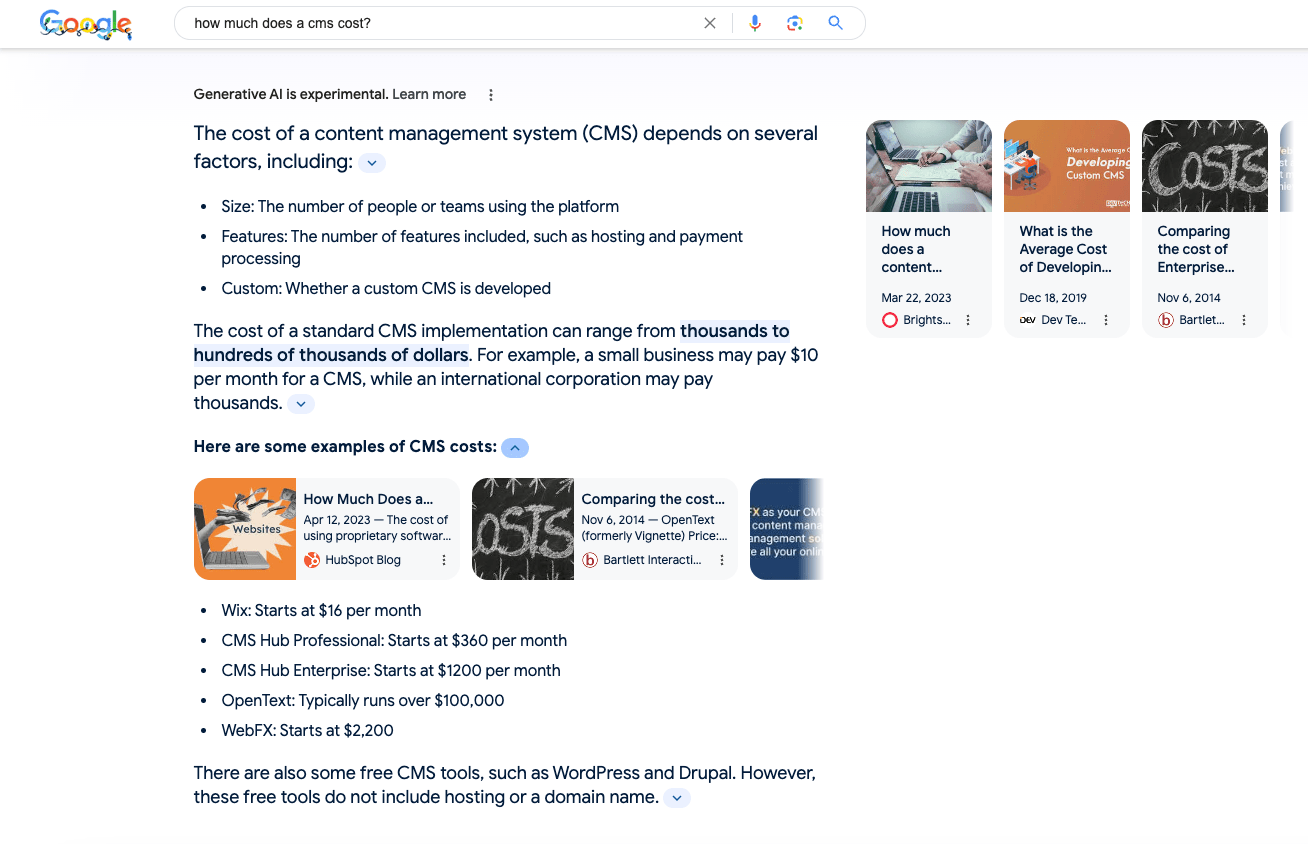
This helps us to understand what SGE is using to create its answers, but we still need to determine why it’s selecting specific content.
What Are Google’s SGE Selection Features?
As we see in the SERP listing pulled from SE Ranking below, the SGE resource we’d highlighted in blue isn’t even in the top 10 organic results.
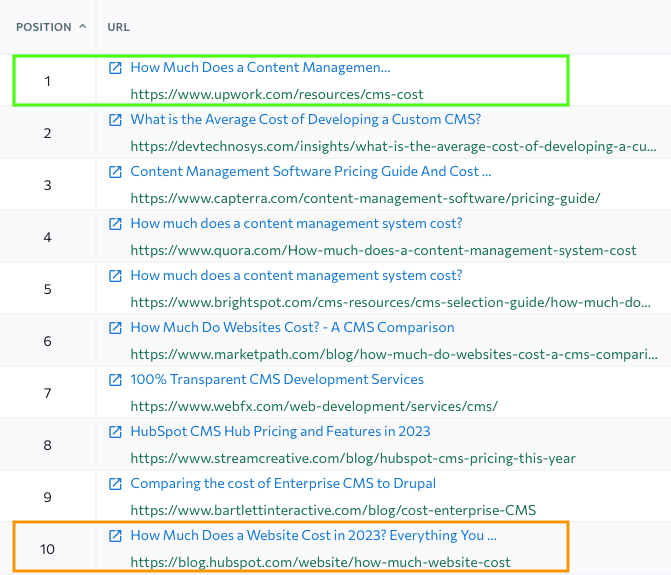
Here’s how SGE’s listed sources, as seen in order when scrolling through its cards, compare to the standard SERP rankings for the same query:
| SGE Sources | Standard SERP Results | |
| 1 | Hygraph | Upwork |
| 2 | Upwork | Devtechnosys |
| 3 | HubSpot | Capterra |
| 4 | Brightspot | Quora |
| 5 | DevTechnosys | Brightspot |
| 6 | Bartlett Interactive | Marketpath |
| 7 | WebFX | WebFX |
| 8 | N/A | Stream Creative |
| 9 | N/A | Bartlett Interactive |
| 10 | N/A | Hubspot |
This indicates that Google is using additional factors to consider what will and will not be included in an AI response.
Factor #1: Type of Content
Google appears to eliminate any Q&A or review sites from its list of potential sources for SGE responses. On the traditional organic SERP, Capterra and Quora hold spots three and four, respectively.
They don’t appear in the SGE results at all—so we won’t be considering them as we continue.
Takeaway: When selecting sources for SGE answers, Google prioritizes longer-form content that intends to inform.
Factor #2: Content Quality
The content of the written quality may also be a factor in Google’s SGE algorithm. Because the AI is using pieces of existing content to form a response, it makes sense that Google will want to draw from content that’s written clearly, correctly, and with a human end user in mind.
By running the “how much does a CMS cost?” query in Clearscope, we see the content quality score for each result in the normal SERP:
| SERP rank | SGE Source | Website | Clearscope Content Grade |
| 1 | 2 | Upwork | A- |
| 2 | 5 | Devtechnosys | C+ |
| 5 | 4 | Brightspot | C- |
| 6 | N/A | Marketpath | B- |
| 7 | 7 | WebFX | C+ |
| 8 | N/A | Stream Creative | B- |
| 9 | 6 | Bartlett Interactive | C- |
| 10 | 3 | Hubspot | B+ |
The two pieces of content selected from this SERP by Google for its SGE response have content scores of A- and B+, despite ranking in spots one and 10, respectively.
Takeaway: While content quality isn’t the only, or even the most important, SGE inclusion factor, it appears that content with a high level of quality is more likely to be included into an SGE response.
Factor #3: Content Age
Google may also be looking at how old a piece of content is.
| SERP rank | SGE Source | Website | Original Publication Date |
| 1 | 2 | Upwork | 2021 |
| 2 | 5 | Devtechnosys | 2019 |
| 5 | 4 | Brightspot | 2023 |
| 6 | N/A | Marketpath | Unknown |
| 7 | 7 | WebFX | Unknown |
| 8 | N/A | Stream Creative | 2022 |
| 9 | 6 | Bartlett Interactive | 2014 |
| 10 | 3 | Hubspot | 2023 |
We know that age isn’t the number one factor used by Google, as SGE sources some data from a page of indeterminate age and one first published in 2014!
When compared with rank in the traditional SERP, though, it appears that content publication date has some influence—the four pages from this SERP that appear highest in the SGE list of results were all published between 2019 and 2023.
Those pages have the date clearly marked at the top of the content, too.
Takeaway: Dated content publication, followed by regular updates, may improve the likelihood that your content is selected by Google for inclusion at the top of its SGE results window.
Factor #4: Traffic Volume
Traffic volume may also be another that Google considers when it evaluates which sites to move from the standard SERP into an SGE response.
| SERP rank | SGE Source | Website | Monthly Traffic |
| 1 | 2 | Upwork | 2.2 million |
| 2 | 5 | Devtechnosys | 17,000 |
| 5 | 4 | Brightspot | 5.5 million |
| 6 | N/A | Marketpath | 296 |
| 7 | 7 | WebFX | 495,900 |
| 8 | N/A | Stream Creative | 3,000 |
| 9 | 6 | Bartlett Interactive | 462 |
| 10 | 3 | Hubspot | 10 million |
The sites featured most prominently in the SGE result are already getting over one million hits per month through their position in the traditional organic SERP.
Takeaway: It is possible to appear in the SGE result with much lower traffic, but you’ll probably need to ace one or more of the other selection factors on this list at the same time.
Factor #5: Specificity
There’s one issue with looking at the above: it doesn’t factor in one source Google uses in its SGE response: an article published by Hygraph. This was the first source cited by Google in its response!

The Hygraph piece is called The True Cost of CMS Migration and, unlike the other pieces of content selected by Google, it’s a landing page for an ebook.
Every other page is a blog post, guide, or content-rich landing page.
So why does the Hygraph piece appear at the top of Google’s SGE source list?
I believe it’s because the very first sentence of the piece directly answers the question at hand—how much does a CMS cost—with context.
If someone asks “how much does a CMS cost?” you might be inclined to say, “well, it varies” before launching into a detailed explanation. This is the standard (and effective) approach to creating long-form content that you want to rank highly in traditional SERPs.
The idea behind SGE, though, is that the AI response gets right to the answer, with as much detail as possible, as quickly as possible.
That’s why Hygraph’s opening paragraph, displayed below, gets the company a spot at the top of this SGE source list—despite not appearing in the top 10 traditional SERP results for the query.

Takeaway: If you’re targeting a SERP that’s a genuine question, providing the answer (in detail!) immediately at the top of your content may help your site appear as a source in more SGE results.
Putting it Together
If we compare the variables above, we see Google appears to be prioritizing content type, specificity, and quality above all else.
| SERP rank | SGE Source | Website | Content Grade | Publication Date | Monthly Traffic |
| N/A | 1 | Hygraph | C- | Unknown | 3,700 |
| 1 | 2 | Upwork | A- | 2021 | 2.2 million |
| 2 | 5 | Devtechnosys | C+ | 2019 | 17,000 |
| 5 | 4 | Brightspot | C- | 2023 | 5.5 million |
| 6 | N/A | Marketpath | B- | Unknown | 296 |
| 7 | 7 | WebFX | C+ | Unknown | 495,900 |
| 8 | N/A | Stream Creative | B- | 2022 | 3,000 |
| 9 | 6 | Bartlett Interactive | C- | 2014 | 462 |
| 10 | 3 | Hubspot | B+ | 2023 | 10 million |
Any sites publishing user reviews or Q&A forum type posts won’t be included in the SGE response. I’ve yet to see these types of sites appear in any SGE results—instead, they’re more likely to appear under the “perspectives” search filter.
If you’re creating the right content, then Google appears to look for specificity. They want a single question answered clearly, up front, in detail.
Hygraph ticks the first two boxes on this list, so they’re used as the first source in the SGE result.
After that, Google’s seeking high-quality content. The content I wrote appears in the first spot on the traditional SERP result because it meets all of our existing ranking factors—with links, semantic keywords, formatting, and lots of detail about the topic.
But because Hygraph gets right to the point—despite having a lower quality score and arguably targeting users at an entirely different stage of the funnel—it’s displayed as the top source; the first answer in the SGE response.
What About the Other Factors?
They still count! But after you get past the first three, the order of operations becomes less clear.
Content age and traffic volume both appear to influence whether a page gets cited as a source, but with less of a potential impact than content type, specificity, and quality.
Is It Time To Optimize For SGE?
Going all-in on SGE optimization right now isn’t likely to have a high ROI for your operations. Because the service is not yet available for all Google accounts—and has to be manually turned on by the user on a desktop—it won’t account for a high percentage of your organic traffic.
It’s also liable to change. The SGE product is still in Labs, which is an incubator. It’s entirely possible that Google will change its approach to SGE between now and the point at which it makes an AI search product the default.
But experimenting with SGE right now can be a great idea. SGE results re-generate each time the search is run, using similar sources that follow the factors outlined above. Run some searches, evaluate your competition, and try optimizing existing content to appear in SGE by creating or moving definitions and improving content quality.
It’s not time to throw out everything you know about ranking for a SERP—but it is time to open up to possibilities and explore what’s next.
Note: The examples and opinions above are strictly my own and not representative of any strategies used by or for the companies used as examples.
Written By

Emily Gertenbach
Emily Gertenbach is Principal at (e.g.) creative content. In this role, I help MarTech & B2B SaaS companies generate sustainable traffic growth through organic search.





